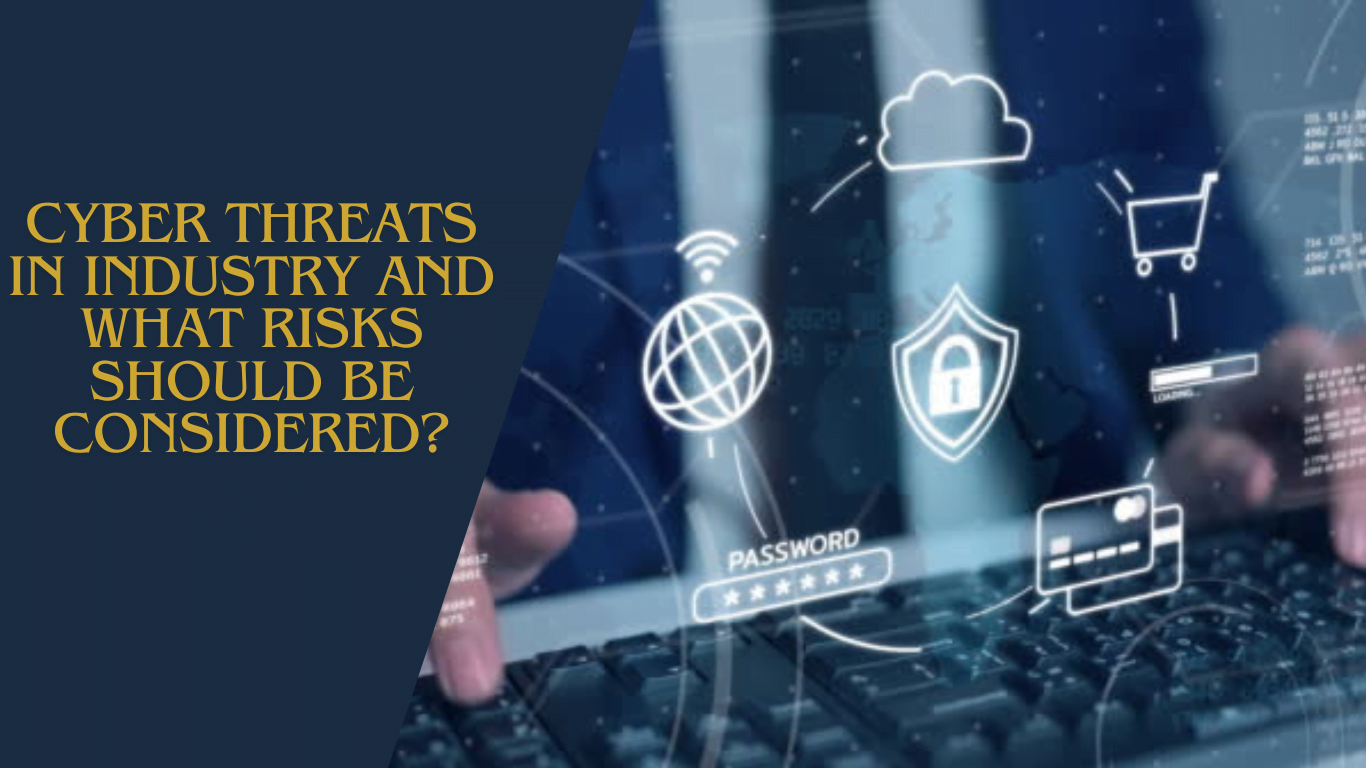
Cyber threats vary significantly across industries, and understanding the specific risks for each sector is crucial for effective risk management and cybersecurity policy, measures strategies. This article will focus on the healthcare, education, and finance sectors, highlighting the unique challenges they face in cybersecurity.
Introduction
Healthcare Sector
Healthcare organizations face a variety of cyber threats, including ransomware, phishing, and data breaches. The Healthcare Industry Cybersecurity Practices (HICP) provides vetted cybersecurity practices to mitigate these threats. The healthcare sector is particularly vulnerable due to the use of connected devices, medical devices, and the sensitive nature of patient data.
Education Sector
The education sector is a prime target for cyber attacks due to a lack of cybersecurity resources, expertise, and awareness.
Cybercriminals target educational institutions for data theft, intellectual property, and research. The education sector is also vulnerable to legacy hardware and software, complex structures, and budgetary limitations.
Finance Sector
The finance sector is a frequent target for cyber attacks due to the value of financial data and the potential for financial gain. Cybercriminals use various tactics, including phishing, social engineering, and malware, to exploit vulnerabilities in financial institutions. The finance sector must also be aware of regulatory compliance and the potential for reputational damage.
what are the most common cyber threats in the healthcare industry?
The healthcare industry faces various cyber threats, including:
- Phishing: Phishing is the most prevalent cybersecurity threat in healthcare. Hackers use advanced social engineering techniques to convince their victims to send them sensitive information.
- Data Breach: The healthcare industry suffers a disproportionally large amount of data breaches compared to other industries. These breaches can result from cyber-related hacking or malware attacks, human error, or insider threats.
- Ransomware: Ransomware attacks are a growing threat amongst healthcare providers. Malware is injected into a network to infect and encrypt sensitive data until a ransom amount is paid.
- DDoS Attacks: A Distributed-Denial-of-Service attack is a flood of fake connection requests directed at a targeted server, forcing it offline.
- Insider Threats: Insider threats can come from employees, contractors, or third-party vendors with access to sensitive data.
- IoT: The interoperability of healthcare systems can create security gaps, and unpatched medical devices can be exploited to gain access to healthcare networks.
- Supply Chain Risks: Cyber attacks on the healthcare industry sometimes result from the negligence of their supply chain or third-party vendors.
To prevent and respond to these threats, healthcare organizations should establish a robust cybersecurity policy and measures that covers all aspects of cybersecurity, including access control, incident response, and data protection. They should secure their perimeter and IoT connections, as well as third-party connections, to minimize the attack surface.
Healthcare organizations should employ a people-centric security approach, focusing on employee training and awareness. They should implement multi-factor authentication and privileged access management. Regular risk assessments and penetration testing should be conducted.
Healthcare organizations should use strong and complex passwords, update all security systems and software, and monitor user activity and third-party connections to detect malicious activity. Finally, healthcare organizations should develop a comprehensive incident response plan that includes legal steps and consequences of data mishandling.
What are some technical safeguards that healthcare organizations can implement to prevent phishing attacks?
Healthcare organizations can implement several technical safeguards to prevent phishing attacks. One of the most effective ways is to use email filters and blocklists to identify and quarantine inbound phishing attempts. URL filters for web browsers can also restrict access to malicious websites that attackers use to collect user credentials or install malware.
Healthcare organizations can also use access controls and multi-factor authentication to limit access to electronic protected health information (ePHI) to authorized individuals. Accounts can be secured using passwords, but single-factor authentication gives attackers an opportunity for access. Two-factor or multi-factor authentication should be implemented to strengthen authentication.
Healthcare organizations can also use a password manager to prevent phishing attacks. Antivirus software should be installed on all endpoints, and advanced solutions that have signature-based and behavior-based detection capabilities should be used. Prompt patching will ensure the window for exploiting known vulnerabilities is limited.
Healthcare organizations should also provide security awareness training to their workforce to recognize common phishing emails techniques and strategies. By implementing these technical safeguards, healthcare organizations can significantly reduce the risk of falling victim to phishing attacks and protect sensitive patient information.
What are some examples of technical safeguards that healthcare organizations can implement to prevent phishing attacks?
Some examples of technical safeguards that healthcare organizations can implement to prevent phishing attacks include:
- Email Filtering and Blocklists: Implement advanced email filtering systems to identify and quarantine inbound phishing attempts. Phishing blocklists can enhance security by isolating messages from known spam sources, reducing the chances of an employee inadvertently clicking on a malicious link.
- URL Filters for Web Browsers: URL filtering technology restricts access to malicious websites attackers use to collect user credentials or install malware. By preventing users from visiting these dangerous sites, medical organizations can minimize the risk of falling victim to phishing schemes that lead to data breaches.
- Access Controls and Multi-Factor Authentication: Limit access to electronic protected health information (ePHI) to authorized individuals. Accounts can be secured using passwords, but single-factor authentication gives attackers an opportunity for access. Two-factor or multi-factor authentication should be implemented to strengthen authentication.
- Antivirus Software and Patch Management: Install antivirus software on all endpoints and ensure that security patches are promptly installed to limit the window for exploiting known vulnerabilities.
- Web Filters and Firewalls: Have sufficient web filters that automatically sort certain keywords and categories into spam. Healthcare organizations can also create a blocklist and block malicious domains to prevent access to risky websites.
By implementing these technical safeguards, healthcare organizations can significantly reduce the risk of falling victim to phishing attacks and protect sensitive patient information.
What are some common mistakes that healthcare organizations make when implementing technical safeguards to prevent phishing attacks?
Some common mistakes that healthcare organizations make when implementing technical safeguards to prevent phishing attacks include:
- Insufficient Email Filtering and Blocklists: Failing to implement advanced email filtering systems and phishing blocklists to identify and quarantine inbound phishing attempts, which can increase the chances of employees inadvertently clicking on malicious links.
- Lack of URL Filters for Web Browsers: Not using URL filtering technology to restrict access to malicious websites, which can minimize the risk of falling victim to phishing schemes that lead to data breaches.
- Inadequate Training and Awareness: Not providing comprehensive and frequent cybersecurity training to employees, which can lead to a lack of awareness about phishing attacks and their potential consequences.
- Failure to Stay Informed About Evolving Threats: Not keeping up with the latest sector threats and cybersecurity best practices, which can leave organizations vulnerable to increasingly sophisticated phishing attacks.
- Inadequate Technical Safeguards: Failing to implement robust technical safeguards such as email filtering, web filters, firewalls, and multi-factor authentication, which can significantly mitigate the risk of successful phishing attacks.
By addressing these common mistakes and implementing comprehensive technical safeguards, healthcare organizations can better protect themselves from the potentially devastating impacts of phishing attacks.
How do cyber threats affect the following industries: financial, health care, energy, retail, manufacturing, and government?

Cyber threats have varying impacts on different industries. Here’s a summary of how cyber threats affect the following industries based on the provided sources:
a. Financial Industry
- The financial sector is a frequent target for cyber-attacks, with over 1,832 reported incidents in a year.
- Attackers see financial institutions as high-reward targets, making them vulnerable to various cyber threats, including phishing, social engineering, and ransomware.
b. Healthcare Industry
- Healthcare and pharmaceuticals are among the most targeted industries by cyber attackers.
- The healthcare sector is vulnerable to data breaches, insider threats, and hacktivism, with government data often stolen for financial gain or espionage.
c. Energy Industry
- The manufacturing sector, which includes energy, is the most attacked in operational technology (OT) environments, with attacks against manufacturers accounting for more than 50% of all incidents against OT organizations.
d. Retail Industry
- The retail sector is prone to common cyber attacks such as system intrusion, social engineering, and basic web attacks. It has also experienced a significant increase in cloud workloads due to the pandemic, making it more vulnerable to data breaches.
e. Manufacturing Industry
- The manufacturing sector is the most active battleground between threat actors and operational technology (OT). Ransomware attacks against manufacturers continue to make headlines, and the industry is vulnerable to phishing attacks, SQL injection attacks, and known vulnerabilities within SCADA and ICS hardware components.
f. Government
- Public administration heads the list of the industries most affected by cyber attacks, with government data often stolen for financial gain or espionage. Malicious actors can attack government databases to obtain strategic information, and some breaches can reveal emails of government officials that contain strategic or secret information.
In summary, cyber threats have diverse and significant impacts on various industries, ranging from financial gain to operational disruptions and data breaches. Each industry faces unique challenges and vulnerabilities, making it essential for organizations to establish robust cybersecurity policy and measures to mitigate these risks.
What are some specific cyber threats that the finance and insurance industry faces?

The finance and insurance industry faces specific cyber threats, including:
- Social engineering attacks, such as phishing and business email compromise (BEC).
- Malware and ransomware.
- Data breaches.
- Insider threats.
- Distributed denial-of-service (DDoS) attacks.
- Third-party cyber breaches, as insurance companies often use third-party providers for critical aspects of their operations.
- Cloud exploits, as insurance companies adopt cloud-based systems.
These threats can lead to direct financial loss, reputational damage, and regulatory noncompliance fines. To mitigate these risks, insurance companies should implement robust cybersecurity policy and measures, such as multi-factor authentication, regular risk assessments, and continuous cybersecurity awareness training for all employees.
Additionally, insurance companies should invest in attack surface monitoring solutions and a robust vendor risk management strategy to protect against third-party cyber breaches.
What are the best practices and examples of how each industry can prevent and respond to cyber threats?
a. Finance and Insurance Industry
Best practices for the finance and insurance industry include:
- Establish a robust cybersecurity policy and measures that covers all aspects of cybersecurity, including access control, incident response, and data protection.
- Secure your perimeter and IoT connections, as well as third-party connections, to minimize the attack surface.
- Employ a people-centric security approach, focusing on employee training and awareness.
- Implement multi-factor authentication and privileged access management.
- Conduct regular risk assessments and penetration testing.
- Use strong and complex passwords, and update all security systems and software.
- Monitor user activity and third-party connections to detect malicious activity.
- Develop a comprehensive incident response plan that includes legal steps and consequences of data mishandling.
b. Healthcare Industry
Best practices for the healthcare industry include:
- Establish a robust cybersecurity policy and measures that covers all aspects of cybersecurity, including access control, incident response, and data protection.
- Secure your perimeter and IoT connections, as well as third-party connections, to minimize the attack surface.
- Employ a people-centric security approach, focusing on employee training and awareness.
- Implement multi-factor authentication and privileged access management.
- Conduct regular risk assessments and penetration testing.
- Use strong and complex passwords, and update all security systems and software.
- Monitor user activity and third-party connections to detect malicious activity.
- Develop a comprehensive incident response plan that includes legal steps and consequences of data mishandling.
c. Manufacturing Industry
Best practices for the manufacturing industry include:
- Establish a robust cybersecurity policy and measures that covers all aspects of cybersecurity, including access control, incident response, and data protection.
- Secure your perimeter and IoT connections, as well as third-party connections, to minimize the attack surface.
- Employ a people-centric security approach, focusing on employee training and awareness.
- Implement multi-factor authentication and privileged access management.
- Conduct regular risk assessments and penetration testing.
- Use strong and complex passwords, and update all security systems and software.
- Monitor user activity and third-party connections to detect malicious activity.
- Develop a comprehensive incident response plan that includes legal steps and consequences of data mishandling.
- Enhance both visibility and network segmentation capabilities across IT and OT infrastructure.
d. Government
Best practices for government organizations include:
- Establish a robust cybersecurity policy and measures that covers all aspects of cybersecurity, including access control, incident response, and data protection.
- Secure your perimeter and IoT connections, as well as third-party connections, to minimize the attack surface.
- Employ a people-centric security approach, focusing on employee training and awareness.
- Implement multi-factor authentication and privileged access management.
- Conduct regular risk assessments and penetration testing.
- Use strong and complex passwords, and update all security systems and software.
- Monitor user activity and third-party connections to detect malicious activity.
- Develop a comprehensive incident response plan that includes legal steps and consequences of data mishandling.
General Best Practices
- Conduct regular employee cybersecurity training.
- Install firewalls and update all security systems and software.
- Create data backups and encrypt sensitive information.
- Reduce your attack surface.
- Assess your vendors.
- Have a killswitch in place.
- Create solid cyber risk policies and strategies.
- Protect your physical premises.
These best practices can help organizations prevent and respond to cyber threats, regardless of their industry.
2 thoughts on “Cyber Threats in Industry and what risks should be considered?”